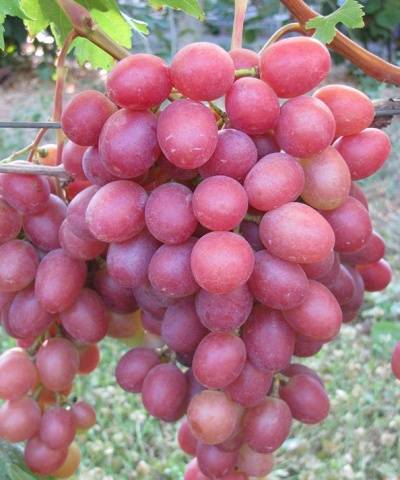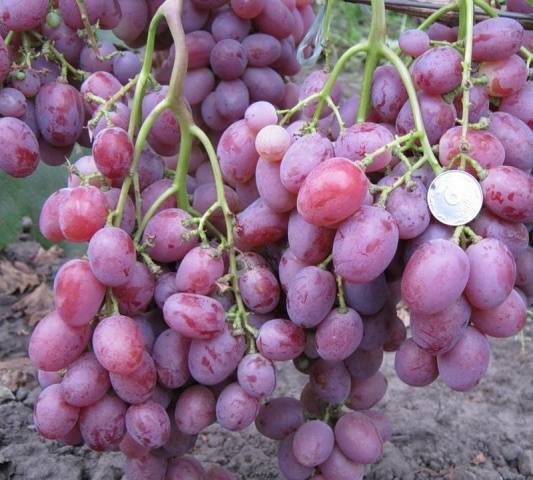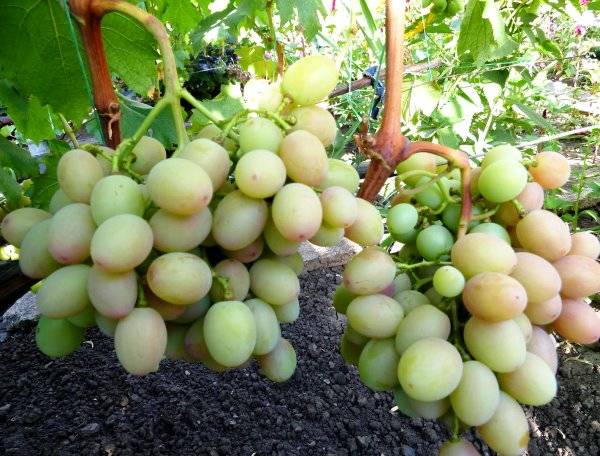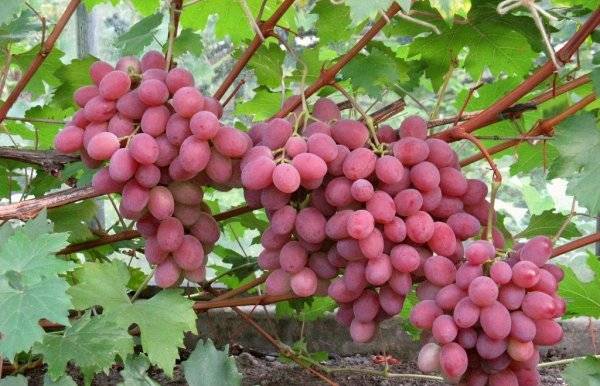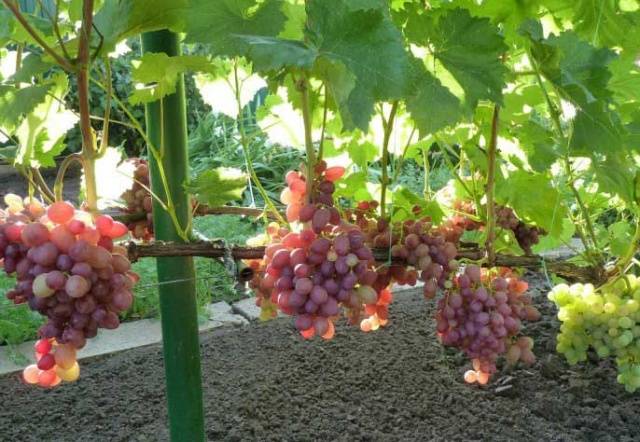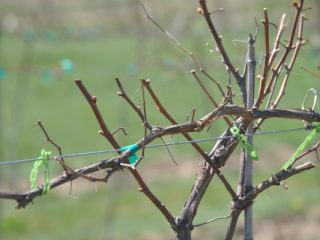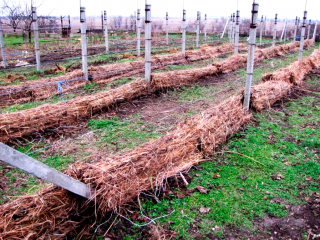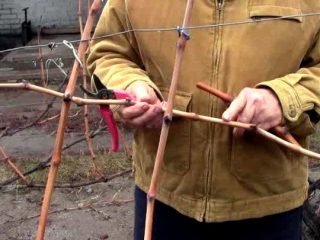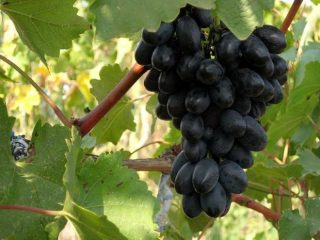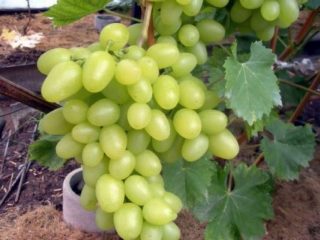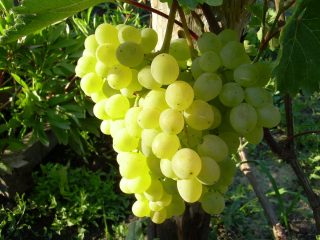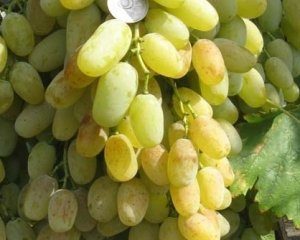Content
Among the many table grape varieties, Anyuta grapes have been occupying a prominent position for 10 years. This wonderful hybrid was created by an amateur breeder from the Rostov region V.N. Krainov. Anyuta grapes are the result of crossing two well-known varieties: Kishmish radiant and Talisman (grape growers also call it Kesha-1). The bushes of this grape - powerful and abundantly hung with huge tassels - are the best decoration for the garden of the southern regions of Russia. Passionate gardeners grow the Anyuta grape variety in the middle climate zone, but this involves great attention to preparing the vine for the winter.
Growing grapes varieties Anyuta will undoubtedly give anyone the greatest aesthetic pleasure, in addition to a magnificent delicate taste. The vine of this variety is also planted by beginning winegrowers, because it has a high survival rate and excellent characteristics in many respects.
Features and distinctive features of the variety
The hybrid variety Anyuta amazes with the delightful rich pink color of its large clusters. This is a highly marketable transportable grape variety. Ripens in 140 days in the south, as mid-season, and in 145 in other regions, as mid-late.
Berries
The brush is quite loose, vaguely conical in shape, the berries are a perfect oval, they do not fit tightly to each other, which is convenient for consumption. At the stage of full ripening, in addition to intense pink, the color of the berries can be less pronounced. It all depends on the region, soil, growing conditions. Ideally, there are clusters weighing up to 1.5 -1.7 kg. The average is 700 g - 1.1 kg, with large berries weighing 10-15 g and size 35-25 mm. With proper care, the weight of the berry reaches 20 g. No peas are observed.
The skin of the berries is quite dense, you can eat it with pleasure, but wasps and other insects cannot pierce it with their stings. With prolonged rain or excessive watering, the skin of the berries may crack. The grape tastes juicy, the flesh is dense, only when stored for a long time, either on the bush, or picked, can it become watery and slimy. Sugar accumulates well. A comparative disadvantage of this variety with high taste qualities is the presence of 3-4 seeds. The taste of the Anyuta grape variety is described as muscat-like, but light, rather harmonious, which again depends on the ripening conditions.
Bush
The Anyuta grape vine is powerful, easily reaching three meters. The flowers of the variety are bisexual, the bush is self-pollinating. Productivity is very high, overloading of the vine is possible, so the bush must be normalized - remove excess ovaries. It bears fruit in the fourth or fifth year and is characterized by good rooting and compatibility with rootstocks. This grape variety requires a large nutrient area. Resistant to mildew and oidium - 3.0 - 3.5 points.
The Anyuta grape has excellent adaptability to moderate climate conditions. Berries are ripening everywhere. For the winter, the vines need to be bent and covered; they tolerate frosts down to -22-23 degrees.
How to grow a new grape bush
For the Anyuta grape variety, there is almost no difference whether it is grown by grafting or planting cuttings. In the first case, fruiting occurs faster, and the bush is more resilient. There is an axiom: grapes planted from the south develop more luxuriantly and bear fruit more abundantly. The vine does not like drafts. In the central regions, it is convenient to plant grapevines under the protection of a building, on the sunny side, retreating 70-90 cm. The proximity to the building will also give the owners of the grapevine a refined aroma of its inconspicuous flowers, which covers the surrounding space with an invisible fragrant veil.
Landing
Cuttings of Anyuta grapes are planted in both autumn and spring.
- Autumn dates require reliable shelter for the cuttings for the winter;
- Spring planting gives confidence in the good rooting of the grape bush;
- The area is carefully dug up, humus and phosphorus-potassium fertilizers are added to the bottom of the hole;
- If the groundwater is shallow, the bottom is laid out with crushed stone, and then with organic matter, compost and fertile soil;
- When planting in spring, cuttings can be treated with iron sulfate. The growing season is delayed, while roots develop and callus forms.
Rootstock cuttings
To propagate Anyuta grapes, you can use trunks of any variety. The root is watered, the rootstock area is cleaned, and indentations are made for wedge-shaped cuttings. Having inserted the cutting, it is tightly wrapped and the top is waxed. The grafting site is treated with clay so that moisture is retained and air can flow.
Grapevine care
Anyuta grapes, like vines of other varieties, need care. Since the vine is vigorous, special attention must be paid to its formation.
- Watering is required, not excessive, especially during the ripening period, because the skin of the berries may burst;
- After watering, the soil is mulched to retain moisture. Old, dark-colored sawdust, moss, and humus are best suited;
- With the beginning of growth, the Anyuta grape vine is formed, the strongest shoots are selected, and strengthened on a trellis. The remaining stepsons are removed;
- Excess ovaries must be removed, because the weight of the bunches will cause the vine to break off;
- Vines that have become woody over the summer are pruned after harvesting the grapes, counting 8-10 buds. This is how the quality of the future harvest of Anyuta grapes is laid;
- Before the onset of cold weather, the vine is bent down and covered, the young rootstocks are sprinkled with sand near the roots, keeping it from scattering with available materials: plywood, boards;
- In spring, the vine needs to be raised in time, carefully inspect the branches, remove damaged ones and those with signs of disease.
Preventive spraying
The grapevine is treated with iron and copper sulfate or new preparations.
The Anyuta grape variety has high resistance to the most common diseases of cultivated vines - mildew and oidium. But for prevention, the bush must be sprayed with fungicides, which are offered in a wide range by the retail chain. All substances should be used strictly in accordance with the attached instructions.
It is advisable for everyone to have promising selective grape varieties on their plot.
